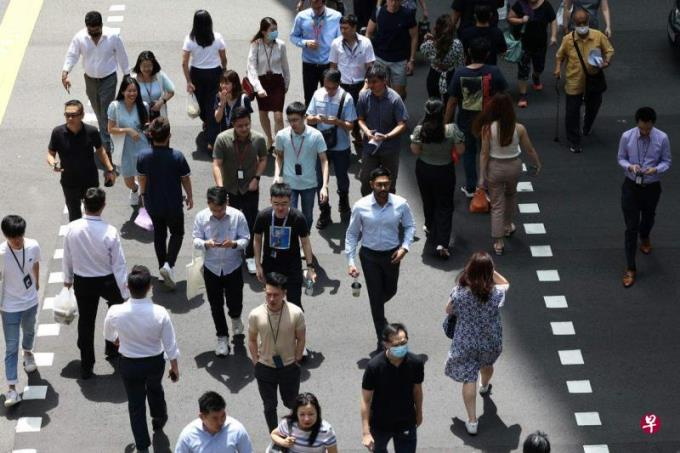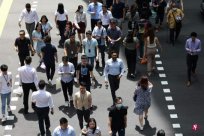
The slowdown in economic growth, corporate reorganization and cutting costs have pushed up the layoff rate.As of the first quarter of this year, the number of layoffs in Singapore rose for three consecutive quarters, from 2,990 in the fourth quarter of 2022 to 3,820 in the first quarter of this year.Due to periodic and structural factors, the momentum of layoffs may continue, especially the traditional manufacturing industry.Under the sweeping of the wave of science and technology, some tasks may be eliminated and can no longer come back.
However, the development of digital technology, the change of geopolitics, and the aging population have also brought many new job opportunities to Singapore.
Singapore is committed to developing a green economy and plans to achieve the goal of net zero emissions in 2050.A survey released by the Energy Market Administration shows that Singapore's clean energy labor is expected to increase by 80%by 2032, from about 1,500 in 2022 to 2700.During the same period, the labor force in the power field is expected to increase by 13%or about 800 employees.
On the other hand, the crown disease epidemic and geopolitical contradictions have changed the layout of the global supply chain.Singapore's geographical location and modern infrastructure have strengthened the hub status of the logistics center.Studies led by the Economic Development Bureau show that in the next two years, the supply chain management will create 700 new positions for professionals, managers, executives and technicians.
The work in emerging fields requires new skills.The report of the Energy Bureau pointed out that the work of electrical solutions, low -carbon alternatives, solar and smart grids require professional skills to design, maintain and analyze the data of these systems.Therefore, digital jobs such as data analysis and network security will increase further.In addition, Singapore will use hydrogen and nitrogen power generation technology in the future, and employees who can operate and maintain these power plants.
Similarly, although the supply chain management also creates new positions, the study pointed out that among the 38 supply chain management positions, 12 job content will change, and new skills must be introduced.This includes planning, procurement, manufacturing, and logistics distribution.At the same time, new jobs will appear, including system designers, data analysts, customer analysts, and integrated business planners that are not available in traditional supply chain business.
Singapore is facing the development of high -value -added industries. Therefore, new work generally has a high technical content and higher wages.Although the government has invested a lot of resources and time in training and encouragement of lifelong learning, the zero -working economy has flourished and some high -end work needs to rely on a large number of foreign talents, showing that there are still structural unemployment problems in local skills that do not match the needs of the workplace.This causes a new high -value -added work to find enough talent filling, and some local employees are engaged in lower technical work due to their outdated skills and missed the opportunity to share the fruit of sharing economy.
The rapid development of technology, the demand for skills is constantly changing, and the forward -looking career plan faces many challenges, but it is necessary.In this regard, the human resources prediction made by the Energy Bureau and the Economic Development Bureau on the energy market and supply chain management will help enterprises and employees better understand the needs of new skills in the workplace, and make corresponding planning in training., Transition to new jobs faster and more smoothly.
Many companies and employees understand the importance of training and lifelong learning, but they do not know how to start, nor can they master specific training content.The profound skill development bureau recently launched a SME analysis platform with a software service company to assist SMEs to confirm the gap between the skills and recommend the appropriate training courses.This helps avoid the blind spots that may occur in the skill improvement plan.
In addition to forward -looking career planning, regularly review the effectiveness of the training courses of Lin Lin, which can help relevant officials ensure that the government's training subsidies are used on the knife mouth.The demand for workplace has changed rapidly, and the content and efficiency of the training courses regularly reviews the phenomenon of reducing abuse, and also ensure that the training can advance with the times.
The rapid development of technology, and the application of format artificial intelligence may further subvert the landscape of the workplace.The intensification of geopolitical contradictions also fills the future economy.For the export -oriented economy of Singapore, it is an opportunity or a challenge. It depends on the level of labor skills in Singapore and whether it can catch up with the needs of economic development.


